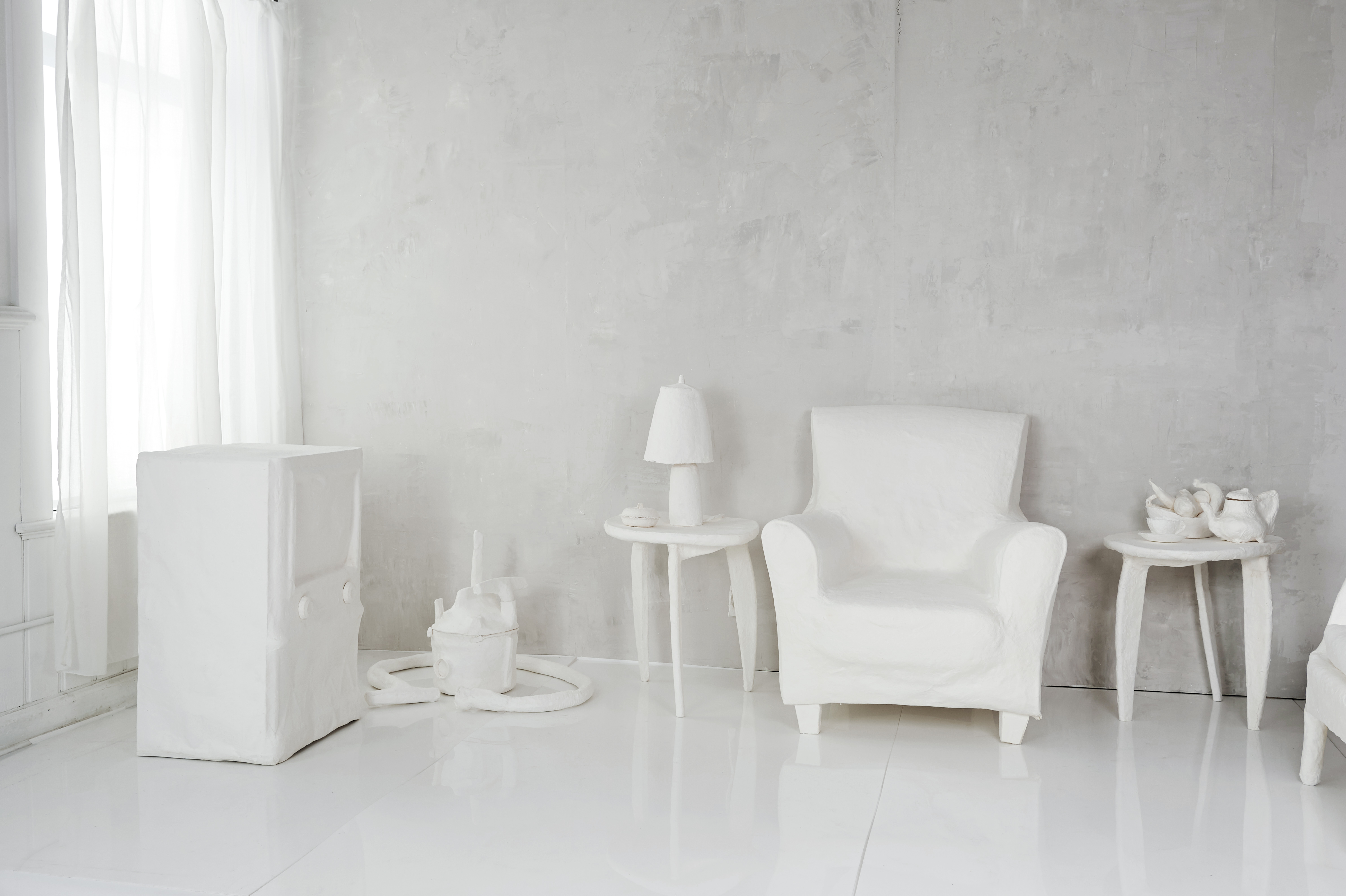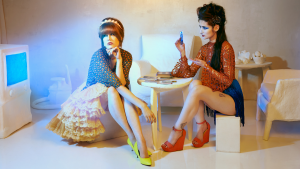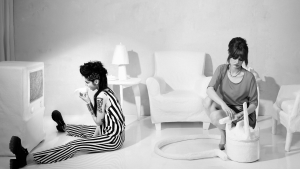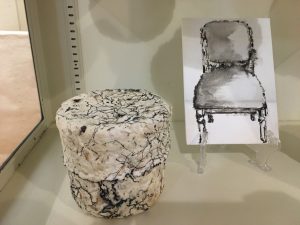
Susan Barton Tait, is a resident artist in the Office Building at The Cotton Factory. It is in this quiet, south facing wing of the complex she spends her work week.
If you were to pass by the door of her studio, you would have no idea this little space is the birthing ground for multiple series of ephemeral artworks.
In her biography, Barton-Tait describes her practice as multidisciplinary, incorporating socio-political ideas that respond to environmental issues, memories attached to objects, women’s issues, and the fragility of family dynamics.
As a child, her family moved to two different prairie communities where her father worked for the pulp and paper mill. It comes as no surprise Barton-Tait has continued in the paper making tradition.
She is an artist who explores materials in the same way one might study an object in science. She does not have an art school background, she studied to be an experimental scientist, this little known fact explains her practice.
“In the 70’s I was doing a lot of public commissions and large fabric pieces. A friend asked if I would like to come and help with a project requiring a lot of felting. I loved it. Later, I applied to go to the Banff Centre for Arts and Creativity where there were people making paper. I found it similar to felting, yet it was not as demanding. In Banff, I started to make large kinetic toys made from paper, and plywood.
Although the work she makes can be quite complicated in its execution, Barton-Tait says, she strives to make things look simple. “I love making intricate things out of very simple objects. You want to go up and touch the work, but because it is so delicate, you don’t”.
“When my husband and I moved to Winnipeg we lived in a little cottage on the Red River. It was sitting on the ground, the walls would freeze in the winter time. We lived there for almost 4 years. I was trying to make a living as a weaver and I became pregnant. We had a little cupboard which was the same length as a crib, I built a fence on the cupboard for my little child and put up a blind which I would pull down so I could weave all night long and sing the baby to sleep.”
“When I was at a residency in Grand Prairie, I always made jokes about living in the smallest house known to man. It was there I started to make tiny houses to scale. I had gone around and measured the house. I drew scaled drawings of the house and what was in it. I started to make stencils from meat packaging styrofoam and started to cover them in pulp. 1 to 10, 1 to 20, 1 to 25, they kept getting bigger until I made one full size. I made three houses of each size of the actual house from the scale drawings prior to making the scale house.”
I made thousands of pieces of paper in order to make it look as though the whole house had exploded.
She showed this work at Two Rivers Gallery in Prince George, British Columbia.
“At the end of the exhibition I didn’t really know what to do with it all. The actual house had been torn down. So I decided my memory needed to disappear too, so I set it free in the Frazer river.”
Barton-Tait video taped the experience which she calls, “Return To Sender”. A Return of the ”Kitchen” (a handmade paper cast of the kitchen from “the Smallest House Known to Man”), to the environment from which it came.
“When I am making paper I am working mainly with cotton.”
Canadian Forest Products Ltd., in Prince George BC, had donated the pulp required to build the housing project. With pulp left over, Susan began to use the remaining materials to cast pieces of furniture and clothing which belonged to her ancestors.
For Barton-Tait casting furniture is about getting to the essence of things.
“I like the idea that I can take an object, completely emerse it in pulp, and it comes out looking exactly like the object. It makes the object visible and invisible, impermanent because it will disintegrate.”
Susan Barton-Tait relocated to Hamilton from British Columbia and through researching her new home, learned about the Cotton Factory. “I found out it was essentially a creative environment and I was craving this so badly. I had been in an area where there were creative people however they did not envelop you. Essentially, I was working alone.”
“Being a creative person, it is tough to self motivate and validate. I love to work in solitude in my own space however, it is nice to have like minded people around to bounce ideas off of and collaborate if the chance appears.”
 The Cotton Factory is a great environment for collaboration. Marta Hewson, a fashion photographer who has a studio in the DyeWorks building of the factory noticed Barton-Tait’s work on display during one of the many public events in the factory.
The Cotton Factory is a great environment for collaboration. Marta Hewson, a fashion photographer who has a studio in the DyeWorks building of the factory noticed Barton-Tait’s work on display during one of the many public events in the factory.
“…..I came across an art installation that was life-size paper furniture, and I was immediately fascinated by it. The display was an armchair, a side table, with a bowl of fruit on it, and an old fashion TV. All made of white paper material. My first thought was “WOW! This is so creative and original!!” but my immediate second thought was “this would make a terrific set for a photoshoot!”
I went in to meet the artist, a lovely and talented woman named Susan Barton-Tait. When I looked around her studio, I noticed she had so many other complimentary pieces that could help in telling the story I wanted to convey in my shoot. I introduced myself to Susan, and explained what my idea was, and she was immediately on board and willing to loan out her art pieces for a photoshoot.” said Hewson https://martahewson.com/blog-marta-hewson-photography/vhc62wxnsxgf8r0ylryaoyis0xpbfi
 “I always find something new to look at in terms of my own art. I see a new problem and I try as many ways as I can to solve the problem. It is exciting for me. I just love it.”
“I always find something new to look at in terms of my own art. I see a new problem and I try as many ways as I can to solve the problem. It is exciting for me. I just love it.”
Susan Barton-Tait’s work includes work with fabric, wax and video installation. Some of her work speaks to the fragility of nature, and the ability of people to move forward despite fragility in the environment. Wax paper and video come together creating installations which captivate, triggering thought and retrospection.
“My art is not a precious object. I am past the point of thinking of art like that. All of my work is ephemeral, it will disappear. It is not necessary for it to be here. It is almost like a post thought”
During the pandemic, Barton-Tait has been in her studio daily trying out new things. She is focused on making art and comes into her studio every day.
“Despite what people say, I feel we are living in really exciting times. People will talk about this time for the next century. I love change. I don’t like things to be static”
 What is her advice for other artists during these times? “Try to be positive. You have to keep working. You are struggling sometimes, that is just how it is. Just carry on. If you don’t get an exhibition, make your own situation. There are always opportunities. If you have to rent space to show your work, just do it!”
What is her advice for other artists during these times? “Try to be positive. You have to keep working. You are struggling sometimes, that is just how it is. Just carry on. If you don’t get an exhibition, make your own situation. There are always opportunities. If you have to rent space to show your work, just do it!”
To learn more about Susan Barton Tait’s work, visit her website at https://susanbartontait.com
